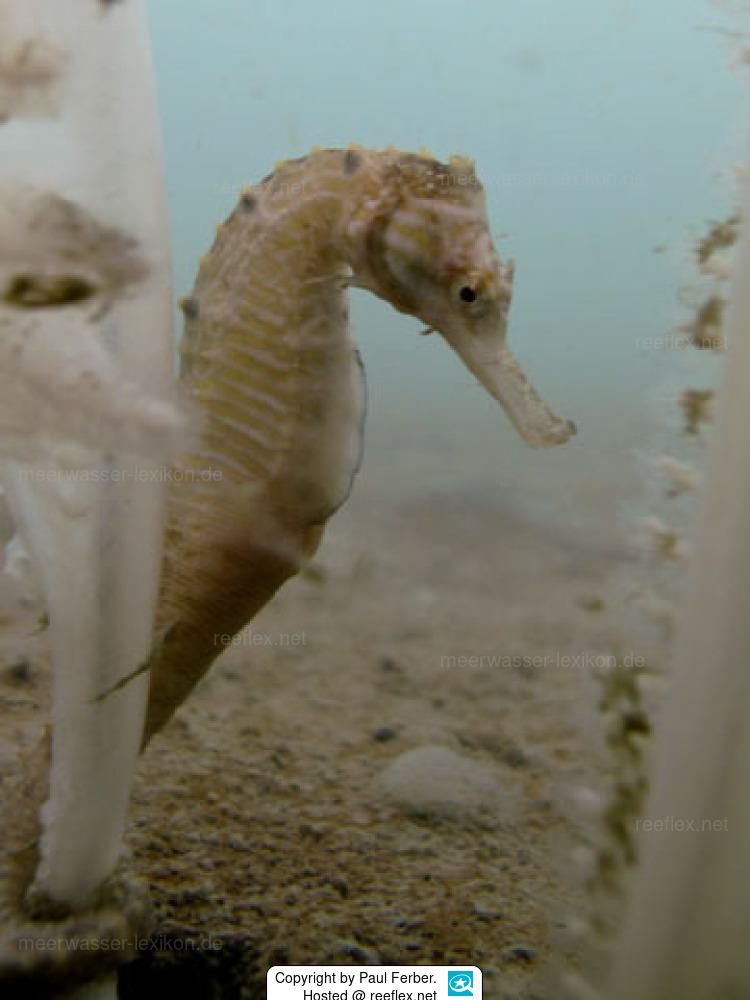Info
Distribution:
Indo-Pacific: southern India to Japan, Australia and Tahiti. International trade is monitored through a licensing system (CITES II, since 5.15.04) and a minimum size of 10 cm applies.
Biology:
Inhabits gravel or sand bottoms around shallow reefs, muddy estuaries and near mangroves, tolerating brackish waters. Ovoviviparous.
The male carries the eggs in a brood pouch which is found under the tail.
Synonymised taxa:
Hippocampus dahli Ogilby, 1908
Hippocampus kampylotrachelos Bleeker, 1854
Hippocampus lenis De Vis, 1908
Hippocampus manadensis Bleeker, 1856
Hippocampus mannulus Cantor, 1849
Hippocampus planifrons Peters, 1877
Hippocampus takakurae Tanaka, 1916
Feeding intake.
The fish take a long time to eat at the beginning, before the food is taken up, a close inspection is carried out. After acclimatisation, the offered frozen food is eaten without problems. It should be noted that wild-caught fish behave differently than offspring when it comes to food intake. In the case of offspring, the size of the fish purchased also plays a role in the choice of food.
You can download the minimum requirements for keeping seahorses (in accordance with EC Regulation 338/97) from the Federal Agency for Nature Conservation as a PDF here: https://meerwasser-lexikon.de/downloads/BfN_Mindestanforderung_haltung_seepferdchen_hippocampus.pdf







 Paul Ferber, Kambodga
Paul Ferber, Kambodga
























































